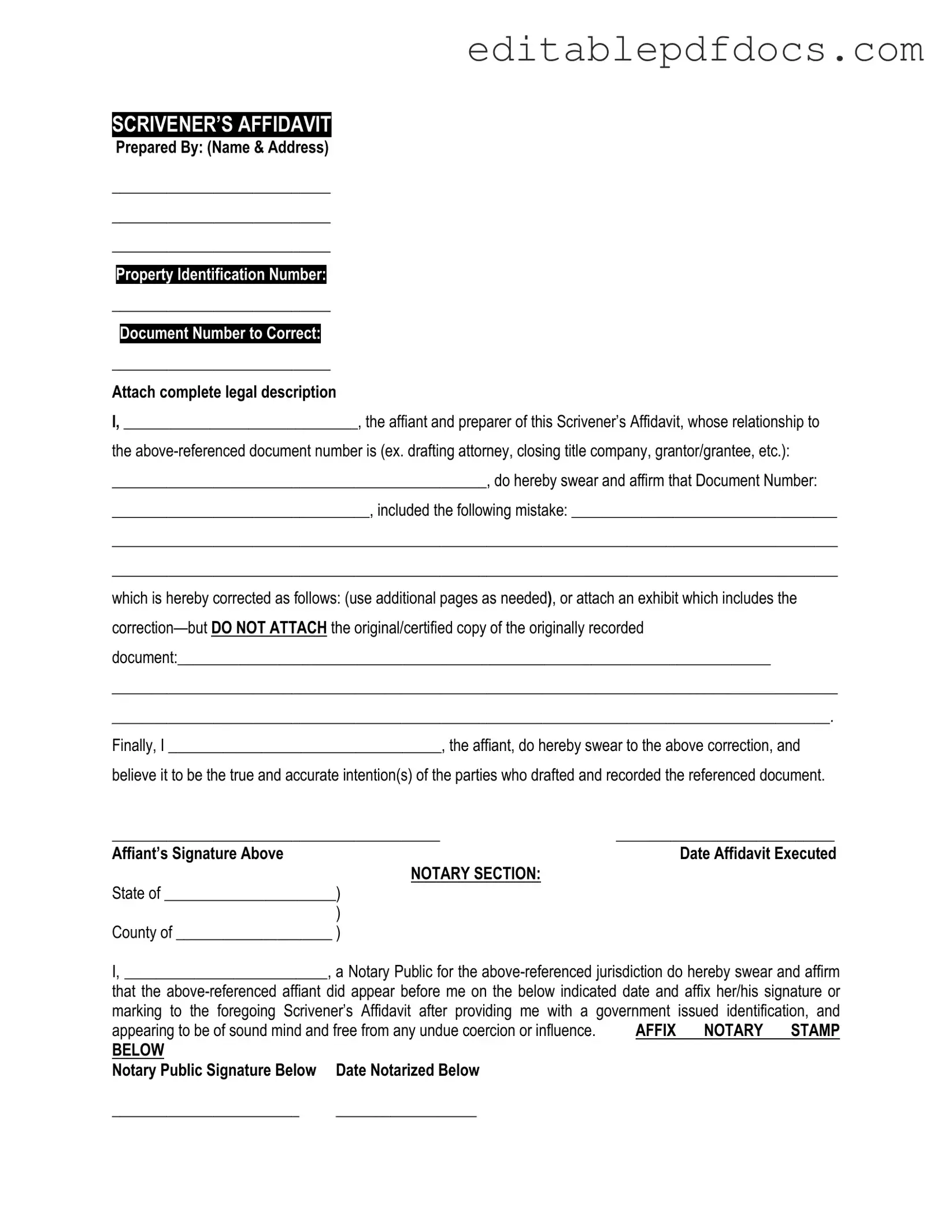Filling out the Scrivener's Affidavit form can be a straightforward process, but many individuals make common mistakes that can lead to complications. One frequent error is failing to provide accurate personal information. This includes not only the name but also the correct address and contact details. Inaccuracies can result in delays or even the rejection of the affidavit.
Another mistake often seen is neglecting to sign the affidavit. A signature is essential for the document to be considered valid. Without it, the affidavit lacks authenticity, rendering it ineffective. Additionally, some individuals forget to date the affidavit, which can create confusion about when the document was executed.
Many people also overlook the requirement for a witness or notary public. The affidavit must typically be signed in the presence of a witness or a notary to be legally binding. Failing to include this step can lead to questions about the affidavit's validity.
Inaccurate or incomplete information about the subject matter of the affidavit is another common pitfall. It is crucial to ensure that all relevant facts are presented clearly and concisely. Omitting important details can undermine the purpose of the affidavit.
Some individuals mistakenly assume that the Scrivener's Affidavit form is a one-size-fits-all document. Each situation may require specific language or additional information. It is essential to tailor the affidavit to reflect the unique circumstances at hand.
Moreover, people often forget to review the entire document before submission. A thorough review can catch typographical errors or inconsistencies that may have been overlooked during the initial completion. Such errors can lead to misunderstandings or legal issues down the line.
Another common mistake is not following the submission guidelines. Each jurisdiction may have different requirements regarding where and how to file the affidavit. Ignoring these guidelines can result in unnecessary complications and delays.
Many individuals also fail to keep a copy of the completed affidavit for their records. Having a personal copy is vital for future reference, especially if questions arise regarding the affidavit's content or validity.
Lastly, some people do not seek assistance when needed. Legal documents can be complex, and it is wise to consult with a legal professional if there is any uncertainty. Seeking help can prevent costly mistakes and ensure that the affidavit is properly executed.
